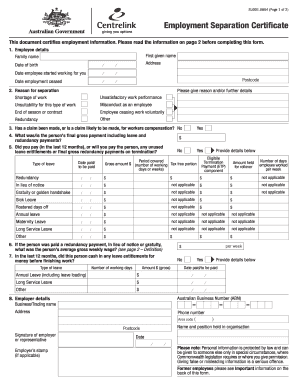What is the days’ sales in inventory ratio?
Contents:


This can be considered as the major drain on return on investment and profitability. Keila Hill-Trawick is a Certified Public Accountant and owner at Little Fish Accounting, a CPA firm for small businesses in Washington, District of Columbia. Holding inventory for a long period also educes return on investment, as excess capital is tied up in inventory during this time. The cash conversion cycle follows cash as it is first turned into inventory and accounts payable, then into sales and accounts receivable, and finally back into cash again. For example, suppose in a 12 month period, a company had a beginning inventory of $9,000 and an ending inventory of $3,000. For example, suppose in a 12 month period, a company has a beginning inventory of $9,000, $20,000 in purchases and an ending inventory of $3,000.

XYZ Limited is a leading https://bookkeeping-reviews.com/ corporation with an average inventory of $15 million. The cost of goods sold on their annual financial statements for 2018 was $300m. Assuming that the year ended in 365 days, determine XYZ Limited’s Days of Sales in Inventory. In the formula above, both beginning and closing inventories are summed up and then divided by two to give the average inventory value. Then the average found here is divided by the cost of goods sold to give days sales in inventory value “during” that particular period.
How to Calculate Efficiency Ratio Inventory & Turnover
An easy way to increase your inventory turnover rates is to buy less and buy more often. When interpreting DSI, it should be compared to the historic DSI of the company as well as its industry competitors. If DSI has decreased over time for a company, it could be due to changes in consumer demand, lack of technological advances, bad pricing strategies, or poor marketing. Yes, if a company ends up selling more goods than the inventory it has, the turnover can become negative.
- To calculate the days of inventory on hand, divide the average inventory for a defined period by the corresponding cost of goods sold for the same period; multiply the result by 365.
- There are three versions of the DSI formula that you can use to calculate the ratio depending on what you are interested in.
- Inventory turnover is also known as inventory turns, stock turnover or stock turn.
- For example, a toy store might have a higher DSI in the month leading up to Christmas as they prepare for a massive sales boost.
- You can easily understand your industry’s performance with the help of high DIO or low Low.
Please note that DSI can also be calculated by dividing the number of days by the inventory turnover ratio . The cost of goods sold can be found listed on the income statement of your company and the ending inventory on its balance sheet. Moreover, you can calculate the Days Sales in Inventory for any time period – you just have to modify the multiplier accordingly. Inventory turnover ratio shows how quickly a company receives and sells its inventory. Inventory turnover days, on the other hand, calculates the average number of days a company takes to sell its inventory.
Example for calculating days inventory outstanding (DIO)
Both investors and creditors want to know how valuable a company’s inventory is. Older, more obsolete inventory is always worth less than current, fresh inventory. The days sales in inventory shows how fast the company is moving its inventory. DSI is a measure of the effectiveness of inventory management by a company.
Fashion stores, on the other hand, tend to buy their inventory in seasons and trade them for the whole season. These can include progress payments, raw materials, work in progress, and finished goods. As well, this ratio can be important to plan for future demand, such as market demand and customer demand. On top of all of this, one of the biggest factors of importance is that the longer a company keeps inventory, the longer it won’t have access to its cash equivalent. Therefore, the company wouldn’t be able to use these funds for other operations and opportunities.
This second formula is essentially the percentage of the products that sold in terms of cost of products sold. You can use this average to estimate the time that said product was predicted to sell. The figure resulting from this formula can be easily converted to days by multiplying this data by 365 or by a period. The second is the days sales outstanding, which is the number of days it takes the company to collect on accounts receivable. The third part is the days payable outstanding, which states how many days it takes the company to pay its accounts payable. The measure can be used in concert with the days of sales outstanding and days of payables outstanding measures to determine the short-term cash flow health of a business.
For example, a company may be stocking up on inventory to prepare for the holidays, or if it anticipates a shortage in the near future. Using the formula for DSI, we see that it took Procter & Gamble an average of 56.67 days to convert its inventory into sales. On its own, this number provides little value because we would need to compare this to similar companies in the same sector. The raw materials inventory for BlueCart Coffee Company is fresh, unroasted green coffee beans. The finished product is roasted, bagged, sealed, and labeled coffee beans. What we’re trying to calculate when we calculate inventory days is how long, on average, it takes BlueCart Coffee Company to turn green coffee beans into sales.

Inventory days will increase based on the inventory and economic or competitive factors such as a significant and sudden drop in sales. It’s essential for businesses to keep track of inventory days during each accounting period. It also instills confidence in the operation of your business and lowers the risk of ending up with worthless dead stock. Days Sales of Inventory is calculated by dividing a company’s sales by its average inventory.
Problems with Days’ Sales in Inventory
To calculate your inventory turnover, the cost of sold goods must be divided by the average or ending inventory for the particular period. Use the number of days in a certain period and divide it by the inventory turnover. This formula allows you to quickly determine the sales performance of a given product. You can also compare your days in inventory with your own historical inventory days calculations. This will help you identify trends, positive or negative, that might be affecting your cash conversion cycle duration.
Days sales of inventory is the average number of days it takes for a firm to sell off inventory. An ideal or good inventory turnover ratio is ranging between 5 and 10 for most organizations. This indicates that an organization should sell and restock its inventory every one to two months. You can easily understand your industry’s performance with the help of high DIO or low Low. Whereas, Days outstanding inventory refers to the average number of days it takes a company to replace its inventory for actual sales.
Can also be called inventory days of supply, inventory period, or days inventory great. An efficiency ratio helps measure the average number of days your company holds its inventory before it turns into a sale. This ratio also calculates the number of days vital funds are tied up to the inventory in place. Measuring your inventory turnover is crucial for both your business strategies and accounting procedures. This formula allows you to consider how well you have been managing your stock, which areas you have the most room for improvement, and how cost-effective your inventory management is. Here is everything you need to know about the days sales in inventory, how to calculate it, and the ways to improve your DOI to optimum levels.
- Therefore it is beneficial in ensuring that there is a faster movement of inventory to enhance cash flows and minimize storage costs.
- That’s because holding onto goods in these highly competitive, rapidly evolving areas can be exceptionally costly.
- To understand the days in inventory held formula, one must look at the inventory turnover formula used in the denominator.
- For a company that sells more goods than services, days sales in inventory is an important indicator for creditors and investors, because it shows the liquidity of a business.
- A smaller number indicates that a company is more efficiently and frequently selling off its inventory, which means rapid turnover leading to the potential for higher profits .
If you divide the number of days in the year by your ITR, you’ll get your days’ sales of inventory. By applying the turnover ratio formula, you’ll find that your ITR was 5. It’s amazing how many business owners don’t know which SKUs are generating profit.
Risks of Days Sales in Inventory DSI
The more time that the inventory remains on the shelves, the longer the company’s cash is held and cannot be used for other operations and hence costing the company extra money. On the other hand, if the inventory turnover ratio is low, it indicates the company’s goods are slow to move or are not getting sold much in the market. As a result, it means higher holding costs, possible outdating of goods held, and naturally lowers profits. On the other hand, DSI shows the time frame the business can turn its inventory into sales. Therefore, inventory turnover and days sales in inventory concepts are related. Effective inventory management can often be the difference between staying competitive or not.
What is the Capital Gains Tax? How is it Calculated? – Kiplinger’s Personal Finance
What is the Capital Gains Tax? How is it Calculated?.
Posted: Mon, 18 Jul 2022 09:46:27 GMT [source]
If you have good relations with your suppliers, you will be able to get the inventory you need in a timely manner. Allison Champion leads marketing communication at Flowspace, where she works to develop content that addresses the unique challenges facing modern brands in omnichannel eCommerce. She has more than a decade of experience in content development and marketing. Ideally, the lowest DSI a brand can pull off without running into inventory issues is the best DSI for them.

Inventory turnover shows, how fast a company can sell its stock/inventory. Whereas, Days Inventory Outstanding will calculate the average number of days the company holds the stock for before rotating it into sales. Is a web-based application that holds all your business’s inventory data in one place for quick and easy access from any computer with an Internet connection.
A high average certified public accountant cpa salary range and compensation could signal the company invested in too much inventory or their current product and sales strategies are not working. However, this number should always be taken into context of the season, company, and industry. For example, a toy store might have a higher DSI in the month leading up to Christmas as they prepare for a massive sales boost. Typically you can find the inventory value on the company’s balance sheet. But the COGS value could also be obtained from the annual financial statement. Keep in mind that it’s important to include the total of all categories of inventory.

Leave a Reply